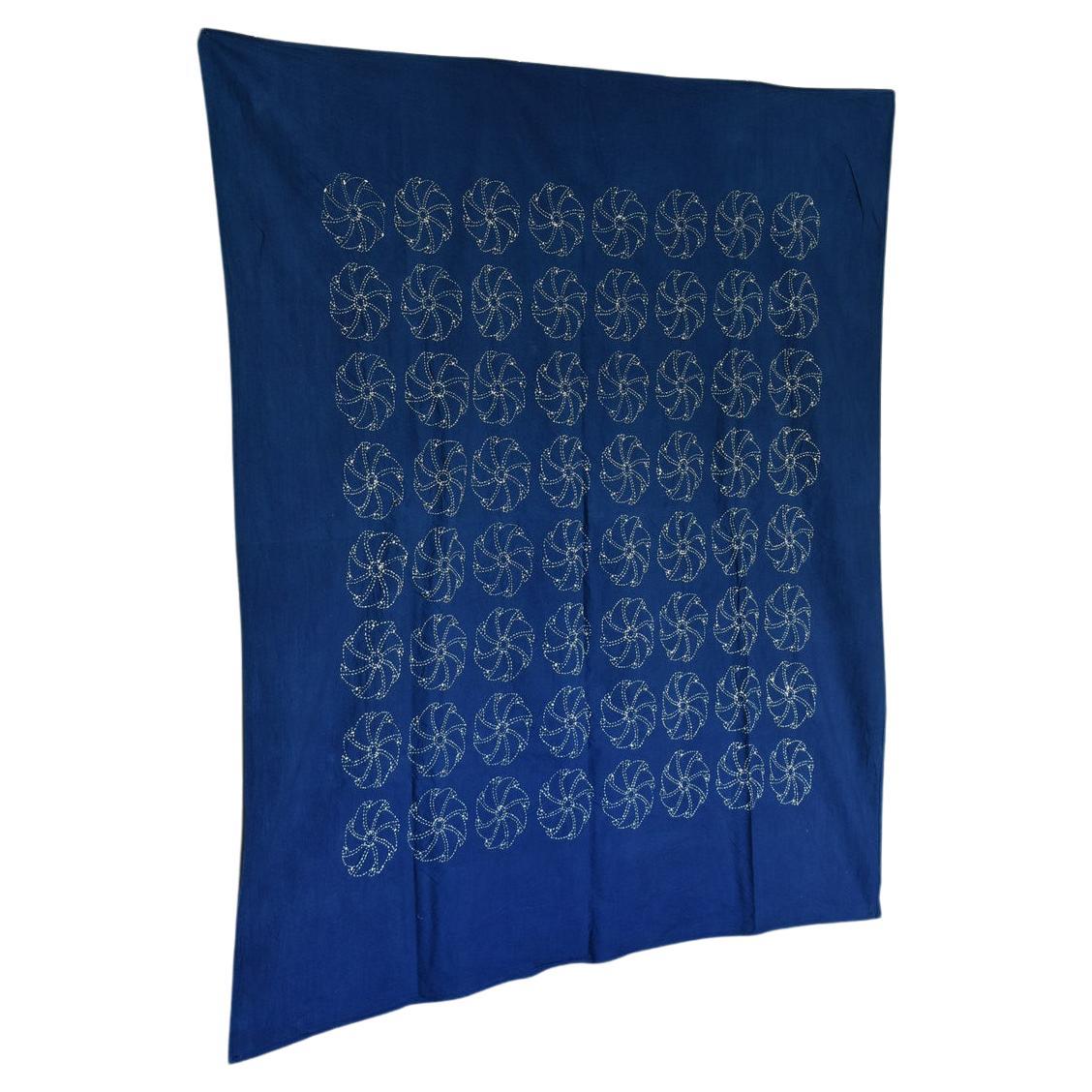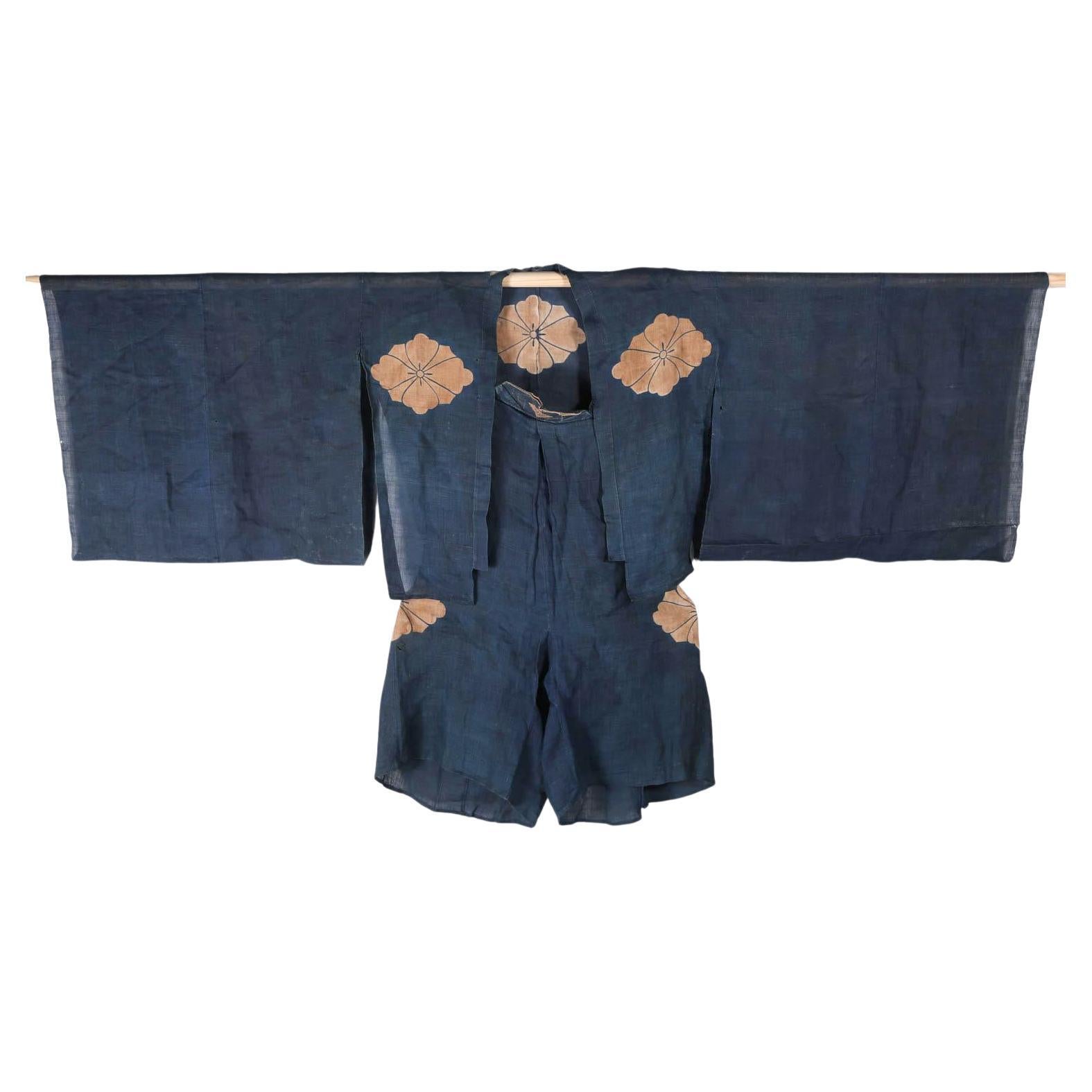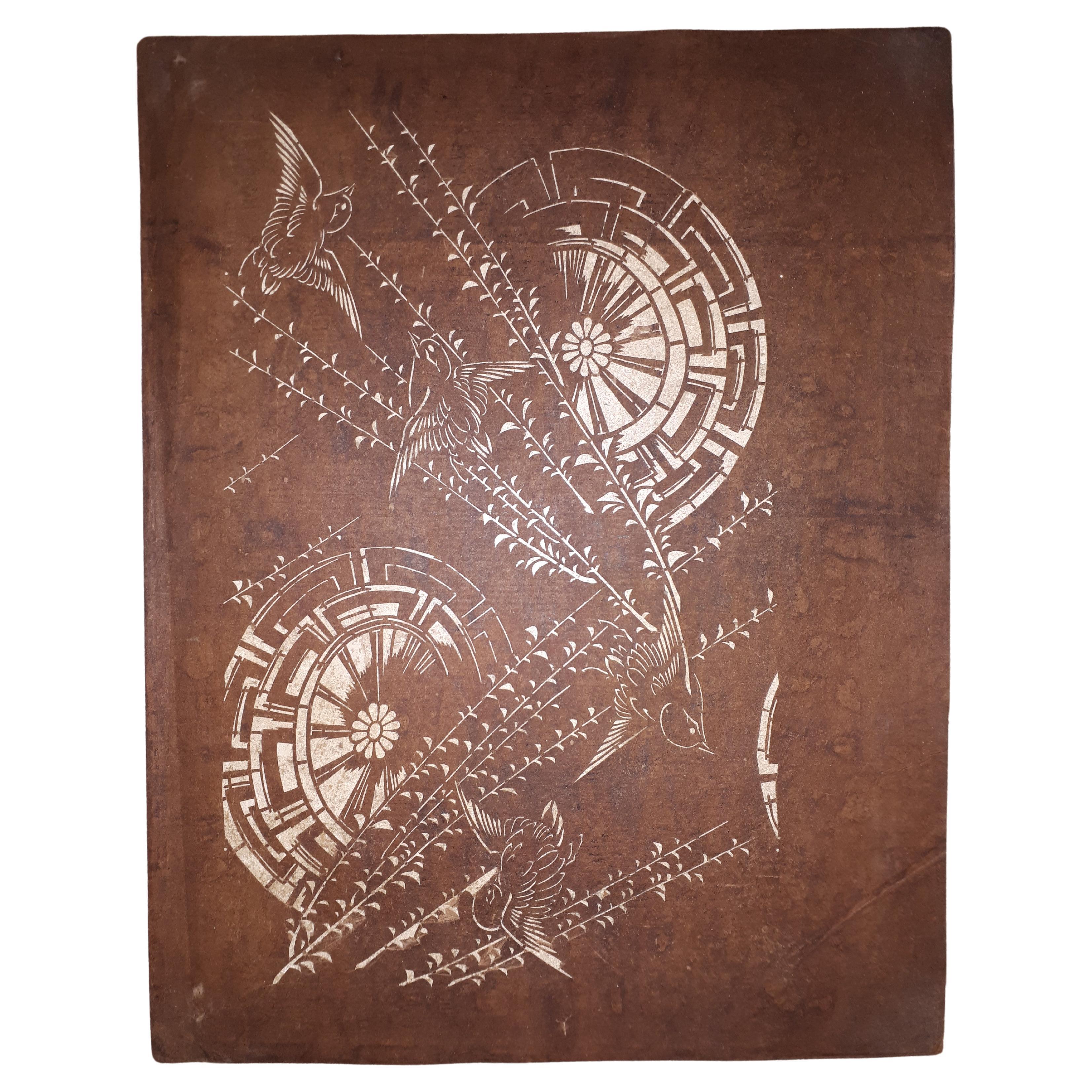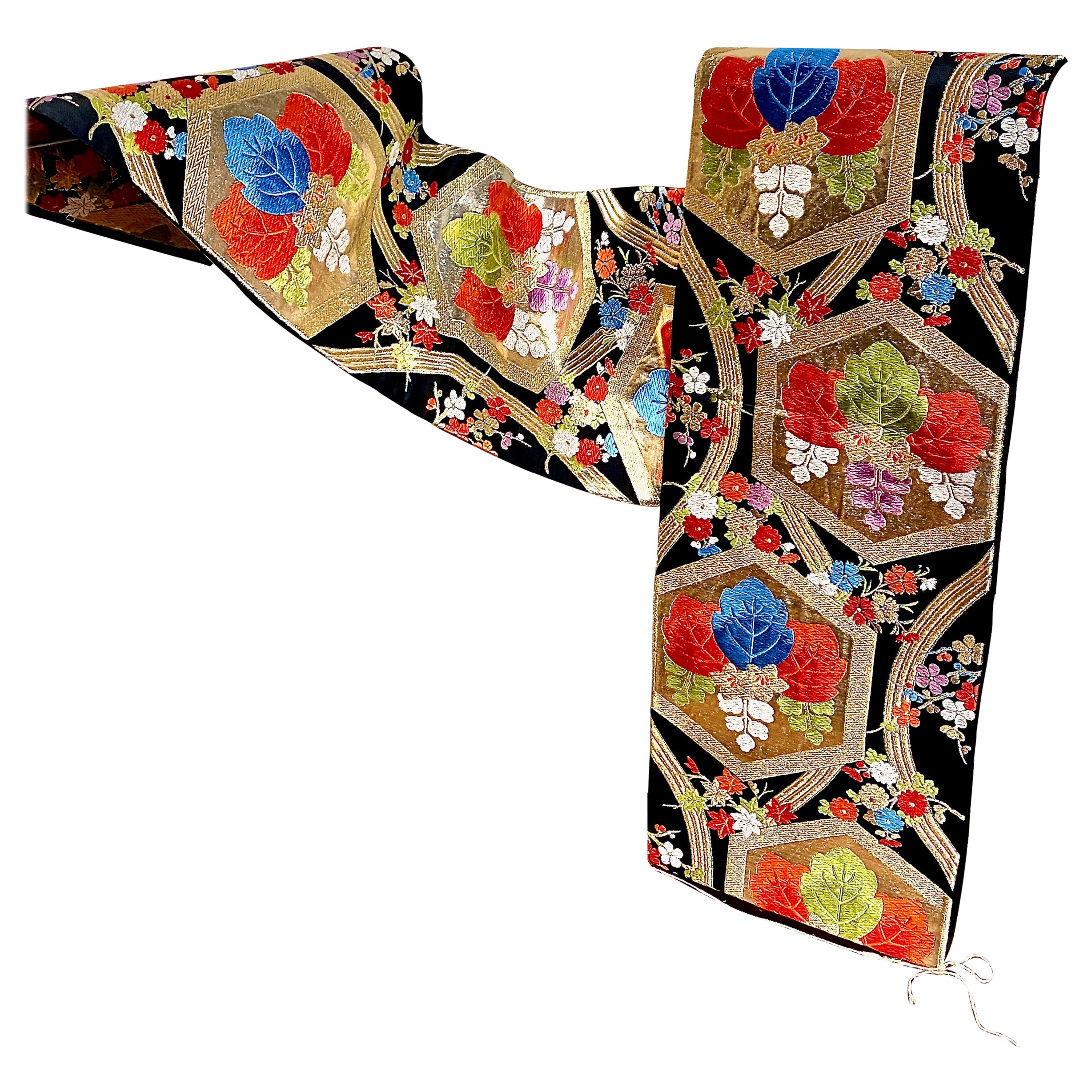Items Similar to Two Post War Kabuki Paddles (Hagoita), Japan, Circa 1960
Want more images or videos?
Request additional images or videos from the seller
1 of 13
Two Post War Kabuki Paddles (Hagoita), Japan, Circa 1960
About the Item
Offered are a pair of post war Japanese Kabuki paddles circa 1960, featuring a male and female Kabuki character actors in full traditional Japanese regalia with weapon mounts in hand. Material is fabric (probably cotton) on wood with hand painted floral themes to the reverse side (see images); handles are wrapped in felt. The paddles are in excellent and all original condition, and would have been used to play Hanetsuki. This was a traditional Japanese game played at the New Year and would have entailed using these elaborate three dimensional looking paddles, called Hagoita, to smash and bat away shuttlecocks or "hanes" (brightly colored round balls) to ward off evil spirits. The custom dates back to the early 17th century Edo period in Japan.
The paddles are intricately and well made; hand crafted with much attention to detail. Unique to find in this larger size and quality, and to find as a pair, especially as a couple. Also hard to find with a pair of "hanes" (shuttlecocks) which are included with the pair of paddles.
Dimensions:
Female character is: 24" high x 9" wide (tapers down to the handle) x 3" deep
male character is 21" high x 7 3/4" wide (tapers down to the handle) x 2 1/2" deep
Provenance: Acquired recently from a San Francisco estate
- Dimensions:Height: 24 in (60.96 cm)Width: 9 in (22.86 cm)Depth: 3 in (7.62 cm)
- Style:Mid-Century Modern (Of the Period)
- Materials and Techniques:
- Place of Origin:
- Period:
- Date of Manufacture:Circa 1960
- Condition:
- Seller Location:Incline Village, NV
- Reference Number:1stDibs: LU973238919952
About the Seller
5.0
Recognized Seller
These prestigious sellers are industry leaders and represent the highest echelon for item quality and design.
Established in 1976
1stDibs seller since 2013
246 sales on 1stDibs
Typical response time: 1 hour
Associations
Art Dealers Association of America
- ShippingRetrieving quote...Ships From: Incline Village, NV
- Return PolicyA return for this item may be initiated within 3 days of delivery.
More From This SellerView All
- '4' Four Hakone Japanese Bisque Figurines, Circa 1950By Hakone Manufacturer JapanLocated in Incline Village, NVFour bisque hand painted Japanese Hakone figurines; also referred to as "Hakata Dolls" or Suyaki Ningyu. These style "dolls" were first introduced in 17th ...Category
Vintage 1950s Japanese Mid-Century Modern Ceramics
MaterialsCeramic
- "Magic Mouse" Mechanical Bank, Japan, circa 1964Located in Incline Village, NVFor the mechanical bank and toy enthusiast, listed is a tin, lithographed and painted, all original 1960s mechanical bank made by the Yone Company of Japan (see image of logo on side panel). The company was founded in 1950 and is typical of the post war companies who produced outstanding children's toys. The action is unique, clever, and encourages saving money. With the bank wound (attached key wind on the underneath (see image); place a penny on the spot provided on top of the bank. The mouse dashes out of the grey shoe...Category
Mid-20th Century Japanese Folk Art Toys
MaterialsTin
- Rare 911 Porsche Friction Tin Toy by Bandai Toy Co. Made in Japan Circa 1960'sLocated in Incline Village, NVOffered here is a whitish/cream colored friction tin toy 911 Porsche circa 1960's, marked at the bottom; "Porsche" in addition to the Bandai Toy Company logo embossed, along with "Made in Japan" designation being noted. The Bandai Toy Company is a post war toy company established in Taito, Japan circa 1950 and is still conducting business today, albeit, it has shifted from toy manufacturing to video toy accessories. This is a very rare toy and is coveted by collectors of both toys and fast cars. Except for the odd and minor scratch here and there, the toy is in very nice, all original condition with absolutely no restoration or touch up to the paint or mechanism (see images). The action and friction functionality works well (see video). Motor and engine mechanics and nomenclature are colorfully displayed through the plastic rear trunk window (see image); while the colorful interior can be seen through the side window. Car is all tin, with rubber tires and plastic windows. Dimensions: 10 1/4" long x 4" wide x 3 1/4" high. Priced competitively; note that this toy doesn't become available very often and the few that have turned up in recent years , don't work and are several hundred dollars more than mine. Note: After 40 plus years of dealing and collecting toys, I am justly qualified to guarantee and present the authenticity of antique and vintage toys; important considering fakes and reproductions in the marketplace it would behoove an enterprising collector, dealer, or decorator to take advantage of the opportunity to buy as many of the vintage tin...Category
Vintage 1960s Japanese Folk Art Toys and Dolls
MaterialsTin
- "Kadi" Pre-war Wind-Up Toy by Lehman Company. Germany Circa 1905By E.P. Lehman Co.Located in Incline Village, NV"Kadi" is the name of this rare Chinese themed vintage German made mechanical toy; depicting two turn of the century Chinese men with pigtails walking along, while carrying a large t...Category
Antique Early 1900s German Folk Art Toys and Dolls
MaterialsTin
- Pair Scottie Dogs Atop Book Theme Japanese Puzzle Bank Occupied Japan Circa 1948Located in Incline Village, NVQuite an unusual piece for bank collectors or just for those seeking a unique collectible. This is a coin bank made of all wood; walnut and inlay here and there; simulating a stack and shelf of books; a pair of "Scottie dogs" (terriers) on top of the bank completes the decoration. The slot on top of the bank accommodates the saving of coins. When it is full; the method of opening the bank to remove the coins, exemplifies the ultimate in Japanese ingenuity. A video attached to the listing displays the foregoing. With the books facing you; slide the two front bottom panels to the left; slide the bottom right panel forward (tilt forward) exposing the opening; slide out the enclosed loose key; push everything back; slide left half of front panel to the left; the middle book drops down exposing the key hole; insert and turn the key to the right to open; lift the hinged lid; remove coins and reverse the process to start over again. Fantastic item!!! This bank was made in Japan, right after World War ll, during the occupation, around 1948. It is a further manifestation of a mid to early 19th century tradition of hiding documents and money in boxes with "tricks" and a multiplicity of "moves" to unlock a box or trunk. With these banks, it is all about condition and completeness, considering the rough play and use it was subject to from trying to figure out how to open it. This particular bank is in excellent and all original, complete condition with no repairs and no replacements, and is from my own personal collection of banks; having been in my possession since 1985. Worth noting is that this example was featured in "Antiquing and Collecting" magazine September 2003 edition in an article on Japanese Puzzle...Category
Vintage 1940s Japanese Folk Art Toys
MaterialsWood
- Victorian Porcelain Spittoon, circa 1880 by Imari, JapanLocated in Incline Village, NVThe mark on the underneath (see image) indicates that this spittoon is of Japanese Imari porcelain, manufactured circa 1880, and made specifically for the American market for the preponderance of bars and saloons at that time. These were popular from 1865 to the turn of the century; this is a particularly fancy and elaborate example. Note the copious and highly detailed and beautiful floral decoration to the inside of the upper portion of the spittoon; pretty fancy for something meant for spit and saliva! Fantastic and all original condition with no cracks, no chips and very bright paint in sharp colors of blue rust and pink, and meticulously painted in a floral pattern. Several of these would have been “stationed” in strategic places within a saloon. This is a wonderful piece of porcelain, and quality item of saloon and Western United States history...Category
Antique 1880s Japanese Victorian Planters, Cachepots and Jardinières
MaterialsPorcelain
You May Also Like
- Post War Embroided Silk Art Imperial Chinese Dragon in Bamboo FrameLocated in Van Nuys, CAPost War II Chinese silk embroidery of a five-clawed imperial dragon in rendered orange thread against a green background. The words "Shanghai China" are embroidered below the dragon...Category
Vintage 1940s Chinese Textiles
MaterialsBamboo, Silk
- Japanese Indigo Dyed Old Embroidery Cloth / Japanese Toy Pattern / 1912-1960Located in Sammu-shi, ChibaIt is a Japanese indigo dyed antique cloth. It calls its name "fu-ro-shi-ki". Originally used in the dressing room of the public bath "furo" during the...Category
Early 20th Century Japanese Showa Textiles
MaterialsCotton
- Japanese Two Panel Screen: Antique Kimono Fabric Mounted on ScreenLocated in Hudson, NYJapanese Two Panel Screen: Late Nineteenth Century Kimono Fabric Mounted on Early Twentieth Century Screen. In the Heian period (eighth century to the twelfth century), noblemen wou...Category
Early 20th Century Japanese Meiji Paintings and Screens
MaterialsSilk, Wood, Paper
- Japanese Two-Piece Indigo Asa Kyogen Festival Costume Meiji PeriodLocated in Atlanta, GAA two-piece Japanese festival costume based on Kyogen theater performance circa late 19th century (Meiji Period). The matching assemble consists of an oversize jacket (Suo) and a pai...Category
Early 20th Century Japanese Meiji Textiles
MaterialsLinen
- Katagami (japanese Stencil), Meiji Era JapanLocated in Saverne, Grand EstKatagami in washi paper, very finely worked. Japan, early 20th century. The sheets of paper making up Japanese stencils are made from mulberry bark. They are stuck together with fer...Category
Early 20th Century Japanese Meiji Textiles
MaterialsPaper
- Japanese ObiLocated in Pasadena, CASuperb example of a c. 1970s Obi. The obi is beautifully woven with multi-colored florals reserves and interlaced cherry blossoms. The reserves are delineated by woven metallic silve...Category
Late 20th Century Japanese Other Textiles
MaterialsSilk
Recently Viewed
View AllMore Ways To Browse
Londi For Bitossi Blue
Outdoor Planters Cachepots And Jardinieres
Cylinder Glass Ceiling Lamp
Joe Colombo 1965
Nautic Lamps
All Pace Furniture
Folding Coffee Table Mid Century
Clear Flower Vase 1960
Rock Crystal Luster
Vase Art Deco Ceramic Belgium
Zameen Rug
Brown Leather Stool French
Pair Of Large 1970s Chandeliers
Rust Metal Pendant Light
Black And Gold Flush Mount
Full Length Mirror With Feet
Iron Scroll Cabinet
Authentic Art Deco Cabinet





